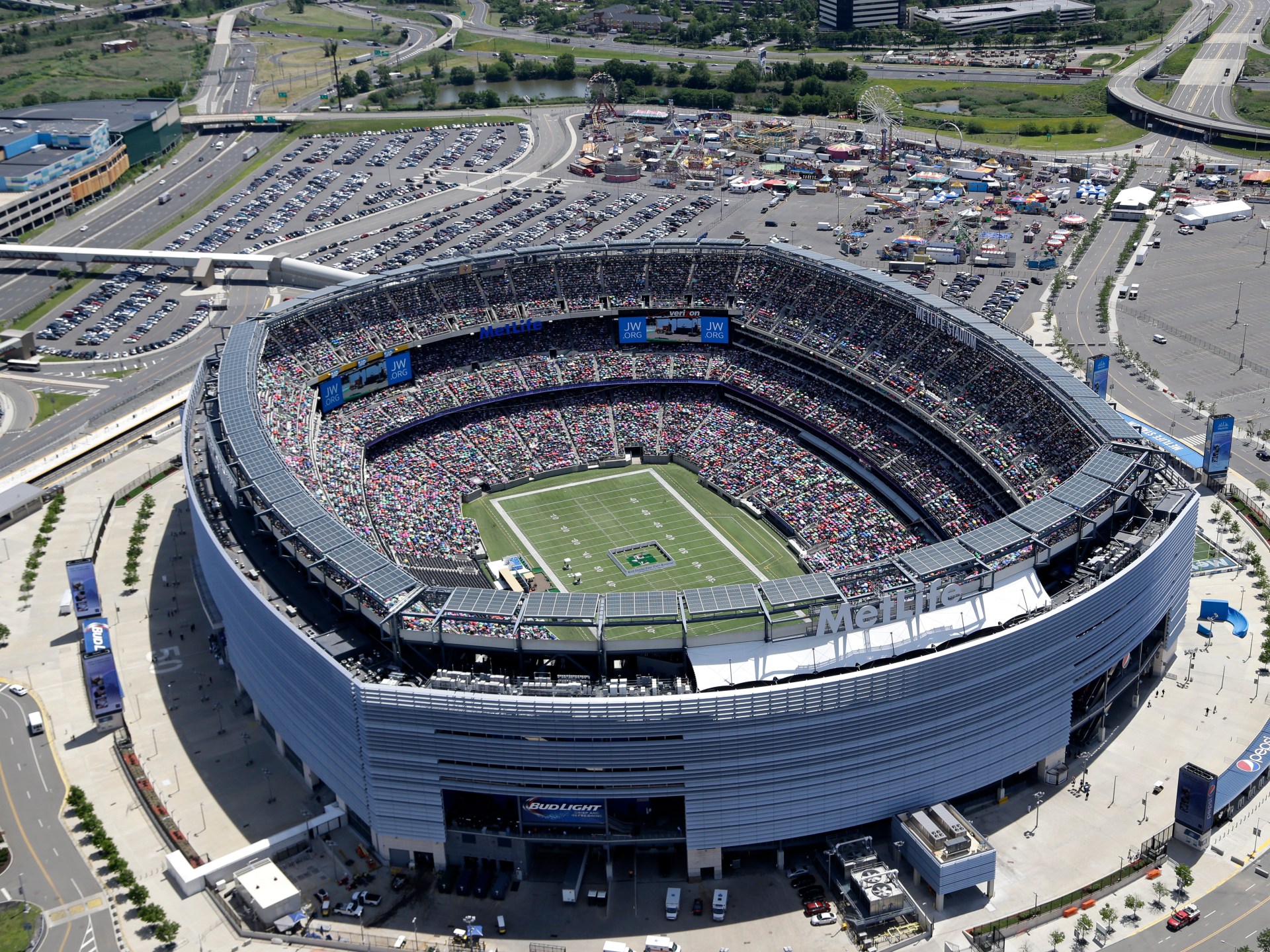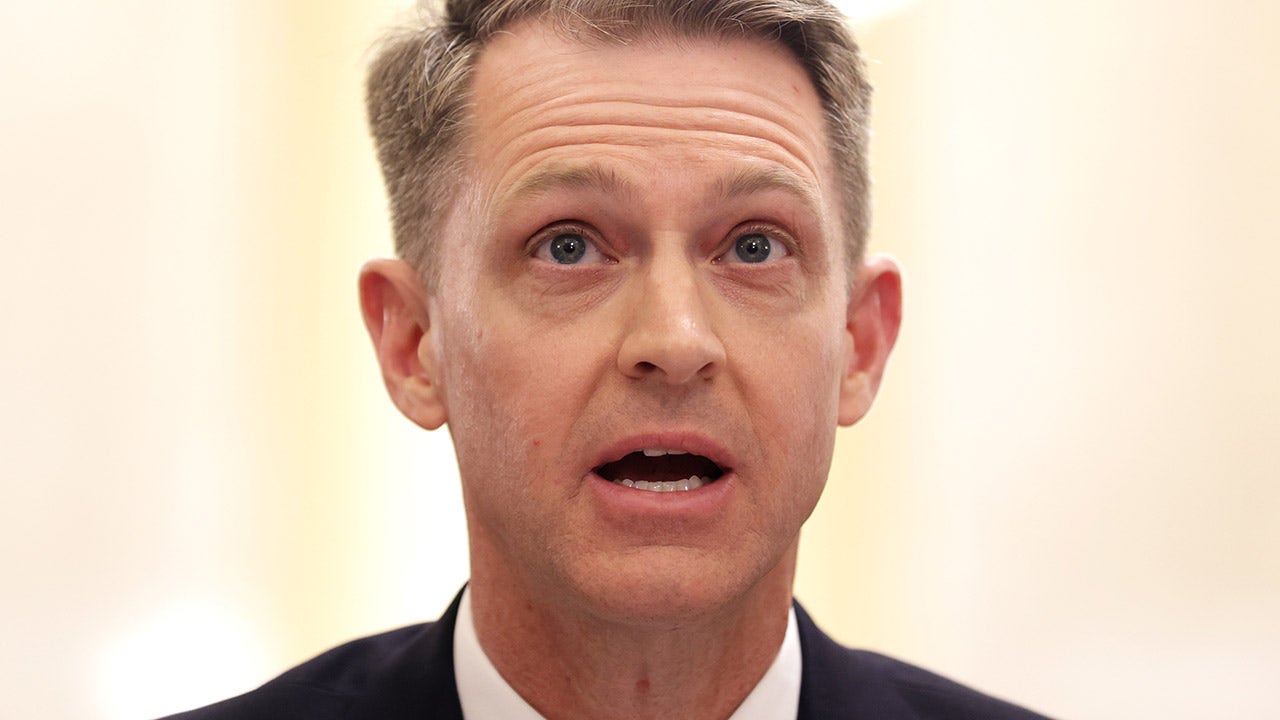Lifestyle
‘The movie tells you how to make it’: After decades, Coppola’s ‘Megalopolis’ is here

Director Francis Ford Coppola at the Cannes Film Festival in May 2024.
Vianney Le Caer/Invision/AP
hide caption
toggle caption
Vianney Le Caer/Invision/AP
Francis Ford Coppola is known for his cinematic masterworks such as Apocalypse Now and The Godfather trilogy. Now, at age 85, the indie filmmaker has created Megalopolis, a mega-ambitious Roman epic set in a futuristic New York City.
The all-star cast features Adam Driver as an architect named Cesar Catilina who envisions a utopia. He’s pitted against Franklyn Cicero, played by Giancarlo Esposito, who seems content to keep the status quo as the mayor of “New Rome.”
As in the Roman Republic, the society is plagued with greed, political division,and special interests. Coppola told NPR he sees the fall of the Roman Republic as a cautionary tale for our times.
“It’s very impressionistic. It’s poetic,” says actress Aubrey Plaza, who plays a journalist known as “Wow Platinum.” She told NPR that while she admired Coppola’s creativity and passion, she found Megalopolis hard to grasp at first: “It’s a beautiful nightmare. It’s beautiful. But it is scary, also.”

Aubrey Plaza as Wow Platinum in Megalopolis.
Lionsgate
hide caption
toggle caption
Lionsgate
Coppola began working on Megalopolis in the 1980’s, and eventually self-financed it with much of his own fortune – $120 million from his wine business.
Sam Wasson, author of a book about Coppola, The Path to Paradise, says the filmmaker has often been misunderstood. A movie about utopia, he says, filled with ideas and artistic experimentation, is not the easiest sell.
“It’s very hard for people to understand why or how an artist could spend so much money on creativity,” Wasson told NPR. “That has made him a maligned Quixote figure in the press.”
Once filming began, Megalopolis’ production made headlines. Early in the process, according to The Hollywood Reporter, the visual effects crew was fired and the art department quit. (Plaza told NPR she believed it was “an intense work environment, but it never seemed to be like, ‘Oh, you know, we’re on a sinking ship.’”) Earlier this year, The Guardian and Variety cited sources claiming Coppola tried to touch and kiss background actresses in a nightclub scene without their consent.
Other cast and crew members denied Coppola had been inappropriate. But online, Variety posted videos reportedly of the party scene. And one of the extras, Lauren Pagone, filed a lawsuit against the director for civil battery and assault. She also alleges negligence by Coppola, his production company Zoetrope and two casting agencies.
Coppola is now suing Variety for $15 million dollars for libel. (In response, a spokesperson for Variety owner Penske Media Corporation told NPR in a statement, “While we will not comment on active litigation, we stand by our reporters.”)
As Coppola told NPR, he has “no intention of litigating this in the media.” In an interview this week, he shared his hopes for Hollywood – and for humanity.
This interview has been edited for length and clarity.
Mandalit del Barco: I want to talk to you about Megalopolis. I know it’s been your passion project for decades. What do you want audiences to take away from this conversation?
Francis Ford Coppola: Well, first of all, there are a lot of phrases in the movie business. They always want to attach phrases. You referred to it as my passion project. Every movie I make involves passion. All movies are passion projects. There’s not…one that’s more [of a] passion project than the other…My earlier films all were different styles. The Godfather is very classical. Apocalypse Now is very wild. One From the Heart was very theatrical. So I began to wonder what my style was. And of course my style is based on whatever theme that the movie is about. And in my wanting to learn what my style would be, I came upon the idea that it would be fun and I would enjoy doing the Roman epic.
In the course of my research, it was very clear that America…based itself on Rome, when it left the English and didn’t want a king. And if you know your history, you know the Roman Republic was invented because they didn’t want a king…And [then], ironically, Rome was repeating what the ancient counterpart did, and its senators were more concerned with their own power and their own money. And that’s how Rome lost its republic. And there was the possibility that we, the modern Rome – which is America – [were] going to repeat [that] historical counterpart. And I thought that was very, very interesting and very prescient.
del Barco: I know you’re asking the audiences to have this conversation about these ideas of what a utopia would look like.
Coppola: I mean, this could be a very long conversation. It could be a very short conversation. Let’s make it short, which is to say that our system seems to be based on a population of people who are unfulfilled – or said another way, people who are unhappy, and are kept that way deliberately, because our major activity is to sell them a little piece of happiness…And it’s clear that if the people were happy, they wouldn’t be interested and there would be good customers. But…I believe that they’re deliberately kept unhappy through various means so that they’ll be good customers. And that’s sort of what’s going on in the world today, which is very troublesome.


del Barco: Wow. And so with this film, you’re challenging the audiences to think about how to reshape that?
Coppola: All I ask them is to have a discussion, which is a simple sentence, which is, is this is the society we have the only one available to us? I believe if people just talk together, people all over the world…we will come up with that. That is, basically a utopia.
del Barco: Has your vision for the film changed over the years?
Coppola: Oh, absolutely. Because – let me explain that when you know exactly how to make a movie, you set about making it according to what you think the rules are. But when you don’t know how to make a movie, which, for example, I didn’t with Apocalypse Now, you listen and the movie tells you how to make it. And that’s what happened with Megalopolis. My wonderful collaborators, the actors, many of the creative personnel, we sort of were collaborating together. We were listening to what the movie was and the movie was saying – do more of this, do less of that, do more of this, do less of that. And that’s how the movie came about and shaped itself. So when you see it, you know, it’s a big production. It’s very spectacular. You haven’t seen it, I take it?
del Barco: I have seen it.
Coppola: Okay. Well…it’s not boring, but your reaction may very well be – wow, what did I just see? What the hell is that? And the best thing to do is to see it again. It’s like Apocalypse [Now]. The more times you see it, the more [it] changes. And that’s exactly what happened with Apocalypse Now. It’s been showing in theaters for more than 40, 50 years, and people are still going to see it. And I think the same thing will happen to Megalopolis.

Actor Martin Sheen with Francis Ford Coppola on the set of Apocalypse Now in 1976. Coppola directed and co-wrote Apocalypse Now.
Caterine Milinaire/Sygma/Getty Images
hide caption
toggle caption
Caterine Milinaire/Sygma/Getty Images
del Barco: I’m sorry to hear [about] the passing of your wife. I know she was probably very integral to this film as well. And I’m wondering if that, you know, that changed the creative process of this.
Coppola: Thank you for your condolences. My wife – the last thing she said to me was, you’re the most courageous man I’ve ever met, because you do what you feel is right. And, you know, nowadays the movie business, like the fast food business, they’ll spend $100 million to develop a potato chip that you find addictive and habit forming. And that’s the way they want movies to be. They want you to think there’s only one kind of movie. But the cinema is always changing. And, you know, I don’t know if you have children, but your grandchildren’s cinema will be totally different than anything we’re doing today. Cinema doesn’t remain the same, even if it’s more convenient to sell it if it does. There’s a line in my film which is – when you jump into the unknown, you prove you are free. And that’s what artists must do. You know, lawyers and businessmen can be ruled by time and convention and what the rules are. But artists don’t have to. Artists control time. I know in my story you see that that happens. But artists, moviemakers, painters, even architects, freeze time. Moviemakers move time backwards and forwards…
My film Megalopolis tells people that they’re extraordinary. There’s nothing we can’t do if we apply our creativity to it. So my vote is that we apply our human genius to the issues of saving this beautiful Earth. And since you’ve seen [the movie], you know, it ends on a very hopeful, celebratory note. It’s joyous at the end.
del Barco: Absolutely. And you don’t always see something like that – on the … grand scale of humanity. Another thing that was extraordinary to me in this film was that amazing interactive moment – with somebody in real life in the theater and the character on screen. I was wondering if you could talk about that idea of live cinema.
Coppola: Well, of course, that’s something I’ve always been interested in. When I made my movie, which was not very successful, One From the Heart, my idea was to make it as a live movie, that actually would be performed live…As I said, I come from theater, and even now I have one foot in the theater and one foot in the cinema. It’s my desire to merge those two.
del Barco: I know you recently filed a lawsuit against Variety for publishing allegations that were anonymous about you on set. And they spoke to people who said that you —
Coppola: Basically basically basically, next question. You know, I know why you’re asking. There’s a lawsuit. Anyway. Next question.
del Barco: Okay. Because there’s another lawsuit, you know, against you.
Coppola: I’m the one suing.
del Barco: You’re suing, and then there’s another suit that’s against you.
Coppola: Mine is the suit. But whatever you think, that’s not a question that’s of any interest.
del Barco: Yeah. I just didn’t know if you were worried that this would affect this film.
Coppola: No.
[Following the interview with NPR, Coppola’s team sent the following statement from the director: “Nothing in my 60+ years career can equal the painstakingly difficult, yet artistically triumphant journey of bringing Megalopolis to the screen. It was a collaboration of hundreds of artists, from extras to box office stars, to whom I consistently displayed the utmost respect and my deepest gratitude.
To see our collective efforts tainted by false, reckless and irresponsible reporting is devastating. No publication, especially a legacy industry outlet, should be enabled to use surreptitious video and unnamed sources in pursuit of their own financial gain.
While I have no intention of litigating this in the media, I will vigorously defend my reputation and have trust in the courts to hold them accountable.]
del Barco: Okay. I know that even in the early marketing, they were saying that you’ve always been misunderstood and ahead of your time. I don’t know if that has anything to do with what’s going on?
Coppola: Oh, that’s a different matter. That’s like when you’re making a movie that’s not like any movie that’s ever been made before, you run into occasionally conflict with people who want to make it the regular way, you know, and want to do things the way they’re used to doing things. And, you know, my feeling is – I like a movie of mine, I like it to feel a little handmade, like the special effects are not just…like every movie’s special effects. Like if you saw my film Dracula, the special effects look as though they’re made with mirrors and by hand.
All of Megalopolis, as big as it is, it’s really handmade – it’s not it doesn’t look like it’s a factory-made movie. And that causes sometimes disagreements with the people who are used to – who have been trained to working in a system that basically, you know… I’ve been around longer than they have. And I know what the cinema used to be like. And it’s not like it is today. Today it’s like the army. You know, if you go to one of the five art directors and say, ‘Oh, I want you to do this,’ then she’ll say, ‘Oh, you can’t step on my toes.’ You have to go to the chief art director. And that’s not the way the cinema was for the 60 years that I was in it.
del Barco: Do you worry that Hollywood is dead now?
Coppola: Well, I’ll tell you in truth. Two wonderful institutions that I love dearly with all my heart – journalism and the Hollywood system – are dying. And what we’re seeing, you know, with journalism making quotes from unknown sources, I mean – you can’t run journalism and just make all your… just to get clicks for people to subscribe and then refer to unknown sources. At the same token, you can’t make motion pictures if your only goal is to make your debt payment. Because, you know, art has a degree of risk to it. And if they’re afraid of risk, then…making art without risk is like making babies without sex.

Writer/director Francis Ford Coppola and Adam Driver as Cesar Catilina in Megalopolis.
Phil Caruso/Lionsgate
hide caption
toggle caption
Phil Caruso/Lionsgate
del Barco: Well, when you are making a film, who are you making your films for? Who [do] you imagine going to the movies to see your films?
Coppola: Well, it’s my audience. I love my audience, but my audience is more like me. I mean… if I’m going to see a movie about the Roman Empire, I like to know a little bit about it. I mean, most people don’t know why Rome invented a republic or why America…why was it that all our founders … who wrote the American Declaration of Independence – why was it they were so aware of Rome?
It’s because they were all educated, and in those days, that meant they spoke Latin, so they had to read Caesar’s Gallic wars and they had to read about Cicero and his contests with Catilina. They knew philosophers like Epicurus…Because they all spoke Latin…that was what an education in those days included. So we were blessed [to] have founders that were so well-educated and were so aware of history that they created a country that has worked effectively for more than 200 years, you know… But, you know, our country is a shining example of the republic concept. And if we lose it in this election, it will be a heartbreak – but yet Rome did lose it 2000 years ago plus.
del Barco: This film is coming out at a very politically charged time… we’re in the middle of an election. And these ideas about what is a republic, what is our society about –
Coppola: What it really comes down to…is there any creature, any intelligent creature – be it an octopus or a dolphin or a parrot or anything – that comes even one percent of… our genius? We are a species that can chart and change the human genome, who can send a spacecraft to photograph Mars, who can move icebergs with particle physics…So, I mean, how can you be told by [a politician], ‘Oh, those people are just animals’? There’s no human being that isn’t part of the human family – that’s our cousin, you know? I mean, they put people down so they can control them.

Giancarlo Esposito as Mayor Cicero in Megalopolis.
Lionsgate
hide caption
toggle caption
Lionsgate
del Barco: You’re probably referring specifically at this time [to] certain politicians.
Coppola: Well, I mean, I think whatever politician denigrates people and puts them down and insults them when I know they’re geniuses. I mean…there’s no creature like the human being. And Megalopolis says that right to your face.
del Barco: You refinanced your winery for, what, $120 million to get this movie made? And not every filmmaker can do that. I mean, how sustainable is this system of financing in Hollywood today?
Coppola: Well, I mean…most companies have been bought recently by another company, which was recently bought by another company. So there’s so much debt racked up.
What’s worse is that they don’t even know everything they’ve bought. I know more about Paramount Pictures than the current owners do. That’s a danger, because since they buy it, their lawyers say, well, ‘What is that part? We don’t need that,’ and they just get rid of it. But that might be a vital part.
In other words, when you’re buying something that you don’t really know a lot about, some lawyers and accountants will tend to want to get rid of the parts that they don’t know what it was for. But there are many parts of movie studios. Thank God people like George Lucas and Martin Scorsese know, and put lots of pressure on them to keep and restore things that came with their purchase, if you know what I’m saying.

del Barco: What do you want to do next?
Coppola: I know I’m finished with Megalopolis because I’ve written a new project. I’m going to go do it in London, because London is the only city that I have never lived in, which means I never lived shoulder to shoulder with my wife, who I miss every morning because I have no one to talk to about…even now when all this is happening, I keep thinking, ‘Oh, I’ve got to tell Ellie what just happened. I got to tell her.’
I thought if I lived in a place where I never lived with her, I’ll still think about her all the time. But it won’t be quite as…. I would like to just live in another place and work on another movie and work with English actors. It’s a musical film. It’ll have a lot of incredible dancing. So it will be fun. I always say it’ll be fun.
del Barco: Do you go into every film thinking, this is going to be fun, it’s going to be a blast?
Coppola: . Yeah, absolutely. I read a great quote that George Lucas gave. He said, ‘You know, when you make a movie, you try to make it go as well as you can, given the circumstances.’ And that that thing – given the circumstances – that’s a big few words, because every movie has a certain circumstance that is not in harmony with what you’re doing. And you have to decide either to change what you’re doing to be in harmony with that circumstance, or you have to change the circumstance to be in harmony [with] the movie… I had to face that in Apocalypse Now and I had to face that in Megalopolis.


Lifestyle
Jussie Smollett Reflects on Lee Daniels' Comments, Says He Loves Director
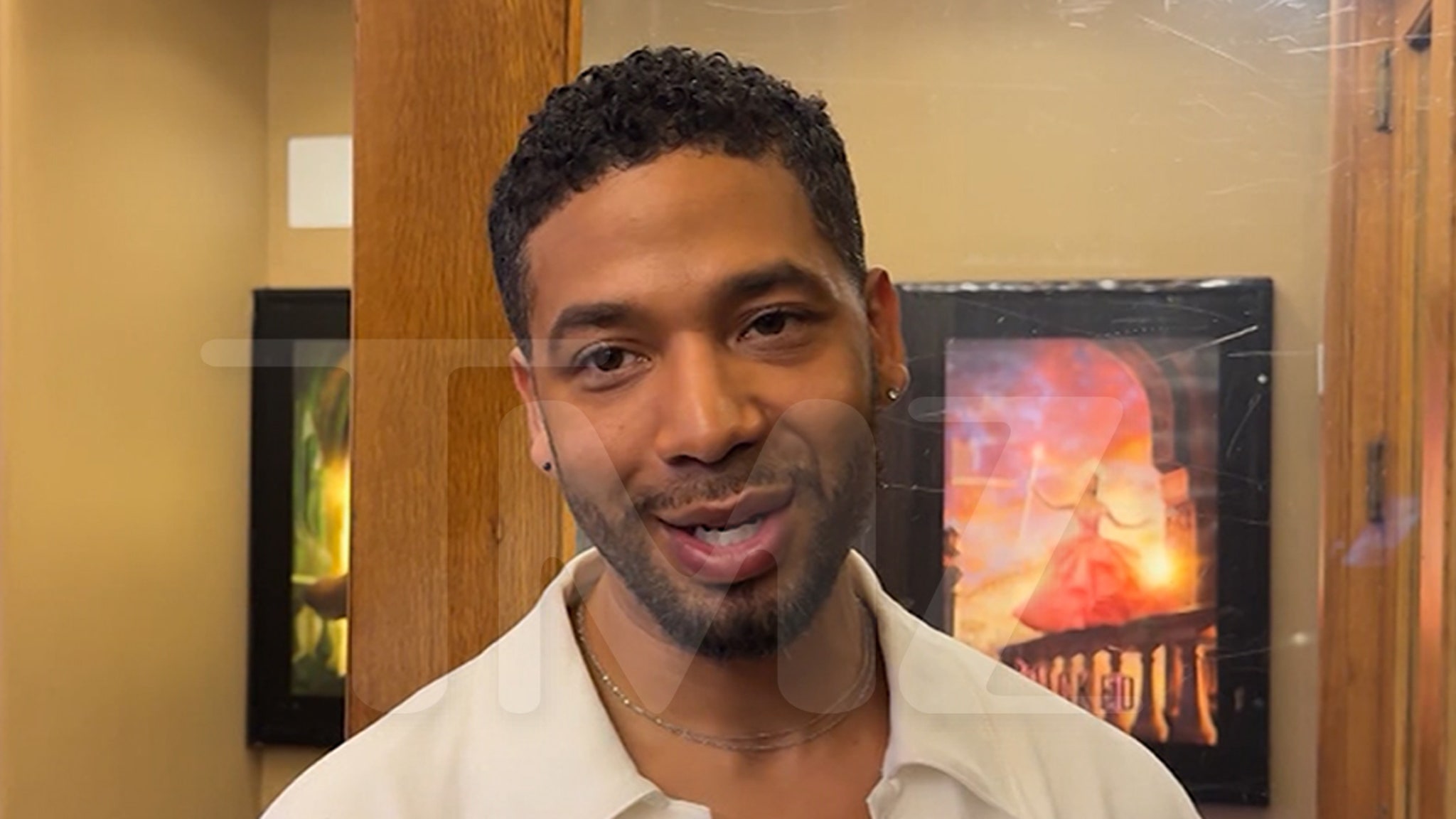
TMZ.com
Jussie Smollett‘s always cool with Lee Daniels … saying he appreciates the director giving him his big break — and, he’d rather keep their relationship private.
We caught up with the embattled actor in New York City Friday outside a movie theater on the same day “The Lost Holliday” — a project JS directed — received it’s wide release … and, we had to ask about Daniels’ recent comments about him.
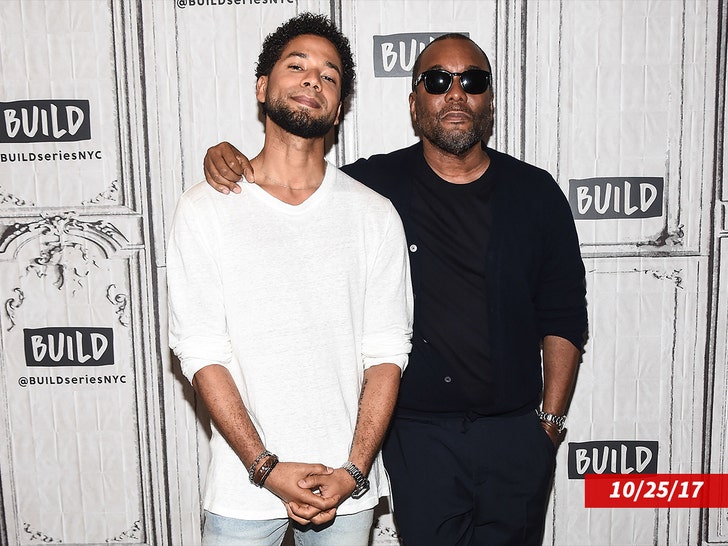
Jussie says he’s got a lot of love for LD … admitting he appreciates the opprotunity Lee gave him — his starring role on “Empire” — and, he doesn’t like to talk about their relationship publicly ’cause it’s so special to him.
Smollett says he doesn’t feel the need to mediate their relationship in the press … though he understands Daniels speaking out on it publicly — saying Lee’s always been an outspoken guy.
The Breakfast Club

8/19/24
When asked if he and Daniels are good, Smollett replies saying they’re always going to be good — no matter what’s said.
ICYMI … Lee recently told Charlemagne Tha God on “The Breakfast Club” that his relationship with Smollett is “complicated” — admitting he doesn’t know what to think about Jussie’s hate crime hoax case.

That said, Daniels revealed he’d cast him again … though it doesn’t sounds like they’re teaming up anytime soon.
Jussie also talks about his relationship with castmates in the clip … saying he needed to address certain topics to keep things comfortable on set — before adding everyone he works with knows his character.
TMZ.com

His aunt, Vivica A. Fox, recently told us “The Lost Holliday” will be Jussie’s comeback flick … and, he just needed to do the work to show people who he is. Sounds like he tried to do just that.
As far his relationship with Lee … that may take more time — and, he probably won’t be commenting on it again.
Lifestyle
'Wait Wait' for September 28, 2024: Live in Kansas City with Dionne Warwick!

Dionne Warwick performs at the New York Stock Exchanges 96th Annual Christmas Tree Lighting at New York Stock Exchange on December 5, 2019 in New York City. (Photo by Jason Mendez/Getty Images)
Jason Mendez/Getty Images/Getty Images North America
hide caption
toggle caption
Jason Mendez/Getty Images/Getty Images North America
This week’s show was recorded in Kansas City with host Peter Sagal, judge and scorekeeper Bill Kurtis, Not My Job guest Dionne Warwick and panelists Josh Gondelman, Shantira Jackson, and Paula Poundstone. Click the audio link above to hear the whole show.
Who’s Bill This Time
A Rotten Big Apple; End of Endless Breadsticks; Fly Me To The Moons?
Panel Questions
Hitachi Magic Migraine Cure
Bluff The Listener
Our panelists tell three stories about a surprising secret to success, only one of which is true.
Not My Job: We quiz Dionne Warwick on other things friends are for
Six-time Grammy winner Dionne Warwick joins us on stage to play our game “Oooh, so THAT’S what friends are for!” three questions about friendship.
Panel Questions
A Friendly Housing Crisis; New Emoji Alert!
Limericks
Bill Kurtis reads three news-related limericks: For He’s Not a Jolly Good Fellow; Nintendo Therapy; Adorable Meanies
Lightning Fill In The Blank
All the news we couldn’t fit anywhere else
Predictions
Our panelists predict what we will find when we land on the Mini-Moon.
Lifestyle
These hiking trails are closed because of the Southern California wildfires
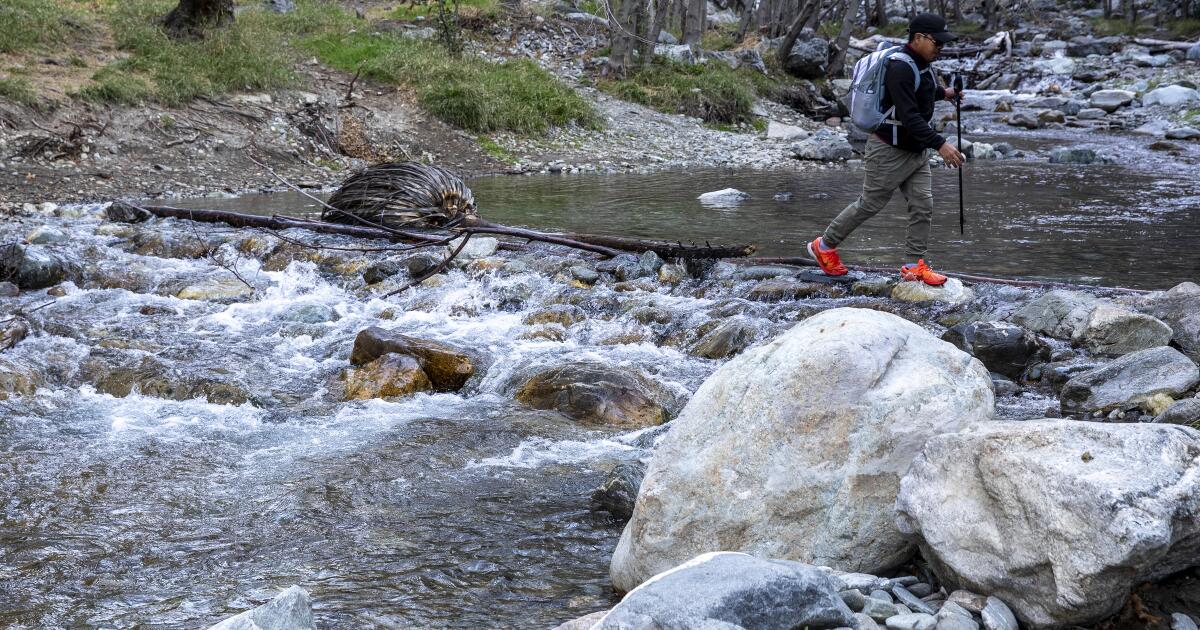
As firefighters complete the final steps to controlling three blazes around Southern California, it’s becoming clearer how and where hiking trails will remain closed for the foreseeable future.
Some trails have burned in the Bridge, Line and Airport fires and will take a long time to recover. Others are closed out of an abundance of caution.
The Times has put together a comprehensive list to help you understand where you can recreate responsibly, and also, whether your favorite areas were burned in recent blazes.
In the coming months, volunteer trail crews across L.A. County and beyond will head to these areas to help with recovery efforts. They are almost always in need of more volunteers.
To put together a better picture of the damage, The Times consulted mapping tool CalTopo, cross-referencing its maps and the fire footprints and forest closure orders with lists of local hiking trails to determine which routes were in the burn area. That said, just because a trail is in the burn area doesn’t mean it was destroyed. We’ll learn more about specific conditions of each trail in the coming weeks and months, as well as when trails might start to reopen.
The Bridge fire | The Line fire | The Airport fire
The Bridge fire
A hiker takes on the Mt. Baldy Trail in May 2017.
(Brian van der Brug / Los Angeles Times)
Almost 55,000 acres in the San Gabriel Mountains and nearby towns have been burned by the Bridge fire. That includes destroying homes and buildings in Wrightwood and the Mt. Baldy community.
As of Friday, the Bridge fire was 97% contained. Firefighters have completed a control line around the majority of the fire’s perimeter. But containment does not mean that the fire that has been extinguished. Wildfires can burn for weeks after full containment is reached and even after fire personnel leave if no risk remains to embers restarting a blaze.
On Sept. 21 , Angeles National Forest issued its Bridge fire closure order, which applies to federally managed roads, trails and other amenities. It is set to remain in place until Dec. 31, 2025, although that date could change.
Last week we cross referenced CalTopo, local trail lists and the Bridge fire map to tell you which trails appear to have been burned. Below you’ll find our updated list of trails that were burned by the fire and also those closed by the forest order.
📌 East Fork and Camp Williams area
The Bridge fire was named after Cattle Canyon bridge in the East Fork of Angeles National Forest, where it started.
Although the fire got close, firefighters were able to save Camp Williams Cafe & General Store and Camp Williams Mobile Home Park from burning.
However, the hiking trails below appear to have been affected, and unless otherwise noted, are closed:
📌 Mt. Baldy area
The road to reach the mountain community of Mt. Baldy has reopened, and businesses are returning to normal operating hours.
Popular hiking trails, including Icehouse Canyon and Icehouse Saddle appear, via the fire map, to not have burned in the Bridge fire. Additionally, San Antonio Falls, Ontario Peak, Cucamonga Peak, Cedar Glen Camp, and the three T’s — Timber Mountain, Telegraph Peak and Thunder Mountain — also did not burn. Although the fire moved near Stoddard Peak’s trailhead, its trail was spared.
Here is a list of some of the popular trails that appear to have burned, according to The Times’ analysis:
Additionally, these trails and sites do not appear to have been burned in the fire but are closed, per the closure order:
📌 Wrightwood and Vincent Gap area
Although the fire got within about 500 feet of the Mt. Baden-Powell trail, it was not burned in the Bridge fire. Additionally, nearby mountains, including Mt. Burnham, Throop Peak and Mt. Hawkins, did not burn. The immediate area surrounding Jackson Lake was not burned, but multiple trails in that area did. The Grassy Hollow Visitor Center was destroyed. Mountain High ski resort survived and aims to reopen later this year for its winter season.
Additionally, these trails and sites do not appear to have been burned in the fire but are closed, per the closure order:
The Line fire

A water-dropping helicopter flies into thick smoke to drop water on the Line fire.
(Gina Ferazzi / Los Angeles Times)
The Line fire, which is alleged to have been started Sept. 5 as an act of arson, has burned more than 39,000 acres in San Bernardino County. It damaged four structures and destroyed one. It has also injured four firefighters. As of Friday, it was 83% contained with “minimal fire activity” and favorable conditions for firefighting expected in the coming days.
Several hiking trails are temporarily closed under the San Bernardino National Forest’s Line fire closure order, which ropes off what The Times estimates to be about 70% of national forest land to the public and includes large swaths of the region that weren’t burned by the fire. The order includes all of the Front Country and Mountaintop Ranger districts, and trails near Lake Arrowhead and Big Bear, among many others that did not burn.
The closure extends beyond the fire’s perimeter because “the fire is not completely contained,” said Sonny St. John, a patrol captain with the federal Forest Service’s Law Enforcement and Investigations unit on the San Bernardino National Forest. “We want to limit using resources on other parts of the forest where incidents could also occur.”
You can find a list of every trail and road closed here. In short, any trail in the San Bernardino National Forest that’s outside of the San Jacinto Ranger District — which sits south of the 10 Freeway and includes the Idyllwild area — is closed.
St. John said the order could be adjusted in scope and size, or terminated, as conditions allow. In the interim, it’s best to call ahead before visiting the area to determine whether the hiking area you’d like to visit is open.
Below you’ll find a list of trails that, based on The Times analysis, were burned by the fire.
Note: Just because a trail is listed doesn’t mean it was destroyed. There aren’t data available yet to discern how severely burned each trail was. This is a preliminary list, based on the Line fire burn map.
- Shelton Trail
- Plunge Creek Truck Trail: The first half-mile was not burned, but the rest was.
- Highland Natural Parkland Trail
- Exploration Trail: About 1.3 miles of the middle section burned
- Keller Peak Road and Keller Peak Fire Lookout: The last mile of the road leading to the peak, south of Keller Peak yellow post No. 9, appears to have burned; the 98-year-old lookout tower at the peak was destroyed
- Mill Peak Trail: The majority of the trail did not burn, but the fire got close to the peak; about a quarter-mile of trail burned, depending on the exact route you take.
- The Redlands R: An unofficial trail off City Creek Road to the iconic letter on the mountainside; the fire map shows the R, estimated to be 415 feet tall by 275 feet wide, in the burn area
- Santa Ana Divide Trail to Alder Creek Fire Road
- Alder Creek Trail 2W18
- Lower Santa Ana River Trail: The first mile does not appear to have burned. Just after the first mile, the fire burned the trail until just after Morton Peak, where there is a 1.8-mile stretch northeast of Morton Peak that wasn’t burned. There’s then another stretch, just under five miles, that’s burned until the trail nears Constance Peak, where the burn area ends north of Angelus Oaks. The remaining 23 miles from near Angelus Oaks east to the Pacific Crest Trail was not burned.
- Siberia Creek Trail: The most popular section of this trail — starting near the Bluff Lake Reserve and heading west to Gun Sight Rock — did not burn. But 1.5 miles southwest of Gun Sight Rock, the trail is burned for about three miles until it ends near Bear Creek. This section of the trail, per the forest service, has not beenmaintained for many years.
- Camp Creek National Recreation Trail: The last half-mile appears to be in or near the burn area, where it ends at Bear Creek.
- Constance Peak Trail: Although not an official forest service trail, hikers may trek about two miles from Angelus Oaks along Thomas Hunting Grounds Road (1N12), which did not burn, before heading off trail to Constance Peak. The off-trail route that hikers have previously taken might have burned, as there is a burned section west of the peak.
Popular attractions, including the Trail of the Phoenix in the National Children’s Forest, Little Green Valley Trail and climbing spot Dinosaur Rocks, did not burn. The Shady Cove Group Campground in the Children’s Forest was also spared. And the fire got close but did not destroy the Bluff Lake Reserve, where firefighters have quickly extinguished spot fires threatening the 80-acre reserve. The Morton Peak Fire Lookout suffered some damage but was not destroyed, per a Southern California Mountains Foundation representative.
The Airport fire

A pair of hikers crossed over the creek on their way into Holy Jim Canyon.
(Mark Boster / Los Angeles Times)
The Airport fire, unintentionally started by workers using heavy machinery to move boulders, has burned almost 24,000 acres since it began Sept. 9 near Trabuco Canyon in Orange County. It destroyed 160 structures, including several homes in El Cariso Village, and damaged 34 others. An estimated 22 people, including firefighters, have been injured. As of Friday, the fire was 95% contained.
Cleveland National Forest — where much of the fire has burned — issued a closure order that bars the public from entering the 138,971 acres of the Trabuco Ranger District, an area far larger than the fire’s footprint. All trails in the district are closed to the public. A list of closed trails and roads is available here. The order is set to expire Sept. 17, 2025.
Below you’ll find a list of trails that, based on The Times analysis, were burned by the fire.
Again, just because a trail is listed doesn’t mean it was destroyed. This is a preliminary list, based on the Airport fire burn map.
- Modjeska and Santiago Peak via Maple Springs and Main Divide Loop: The first half-mile did not burn, but the trails leading to both peaks did.
- Falls Canyon, off the Trabuco Creek Falls Canyon Trail.
- Holy Jim trail to Holy Jim Falls.
- Holy Jim trail to North Main Divide road: The majority of this trail was burned.
- West Horsethief Trail: Although the first half-mile near the trailhead was burned, the rest of the trail heading to North Main Divide Road was spared.
- Trabuco Peak via Trabuco Creek, West Horsethief and North Main Divide Road: Starting at the end of Trabuco Creek Road, the first half-mile along Trabuco Creek Trail is burned. The rest of Trabuco Creek Trail, and West Horsethief to North Main Divide Road to Trabuco Peak was not burned.
- Trabuco Canyon Trail: The area immediately around the Trabuco Canyon trailhead at Munhall Saddle was burned, but the 2.5 miles of the Trabuco Canyon Trail leading northwest to an intersection of the Trabuco Creek Trail and West Horsethief Trail did not burn. Heading west, the first 1.2 miles of Trabuco Creek Trail did not burn while the last half-mile (nearing where the fire is believed to have started) did.
- Upper Hot Spring Canyon to Falls Trail.
- Falcon Trail
- San Juan Trail: Starting at its upper trailhead near Blue Jay Campground, this trail is burned from its start to just past both Sugarloaf peaks. A 4.5-mile section of it due south of Sugarloaf Peak to its lower trailhead on Hot Spring Canyon is not burned.
- Chiquito Trail: Starting near the Ortega Oaks 74 Candy Store and Goods, the trail is not burned for four miles, until it reaches near Chiquito Falls, which appears to be in the burn area. The rest of the trail is burned.
- San Juan Trail to Sugarloaf Peaks: Starting at the trailhead just south of the Lazy W Ranch Camp off Hot Spring Canyon Road, this trail takes hikers northeast to Sugarloaf and New Sugarloaf Peaks. The first 4.5 miles did not burn, but the area surrounding both summits did.
- San Juan Trail to Los Pinos Trail Loop: Its trailhead just south of Lazy W Ranch Camp, the majority of this 21.6-mile loop was burned. It is not burned for 4.5 miles of the San Juan Trail at its start, or finish, and about 2 miles of the Los Pinos Trail in the same area.
- Los Pinos Peak via Bell View Trail: The majority of this trail — also called Bell Ridge on maps — burned, including near the peak. The first mile from the trailhead appears not to have burned.
- El Cariso Nature Trail
- El Cariso Truck Trail: The final mile of this trail is burned.
The Airport fire did not reach the Ortega Oaks 74 Candy Store and Goods, a popular stop for hikers headed to nearby trails, including Sitton Peak, which did not burn. Ortega Falls also appears to have been spared, sitting only about 240 feet south of the fire’s eastern flank. The fire remained far from the popular Black Star Canyon waterfall. Additionally, the popular Bedford Peak trail was not burned.
Did we miss a trail? Or do you have a question about your favorite spot? Please email Times outdoors reporter Jaclyn Cosgrove, who can update the list accordingly.
-

 News1 week ago
News1 week agoToplines: September 2024 Inquirer/Times/Siena Poll of Pennsylvania Registered Voters
-

 News1 week ago
News1 week agoVideo: Who Are the Black Swing Voters?
-

 Politics1 week ago
Politics1 week agoDem lawmakers push bill to restore funding to UN agency with alleged ties to Hamas: 'So necessary'
-
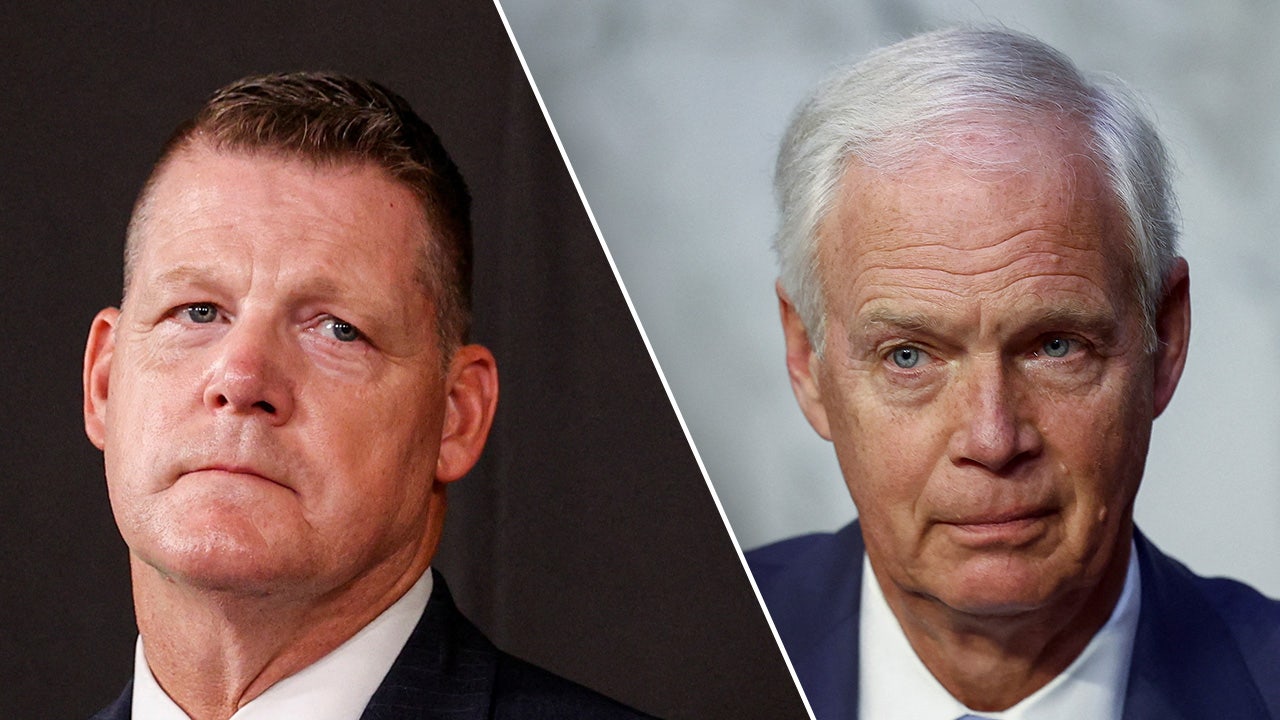
 Politics1 week ago
Politics1 week ago'I've never seen this': Top Republican details level of Secret Service 'lack of cooperation'
-

 Finance1 week ago
Finance1 week agoThis ETF uses ChatGPT to invest like Warren Buffett
-

 News1 week ago
News1 week agoElection 2024 Polls: Florida
-

 News7 days ago
News7 days agoFour killed, dozens injured in Alabama shooting
-

 World1 week ago
World1 week agoCritics slam landmark EU competitiveness report as 'one-sided'




